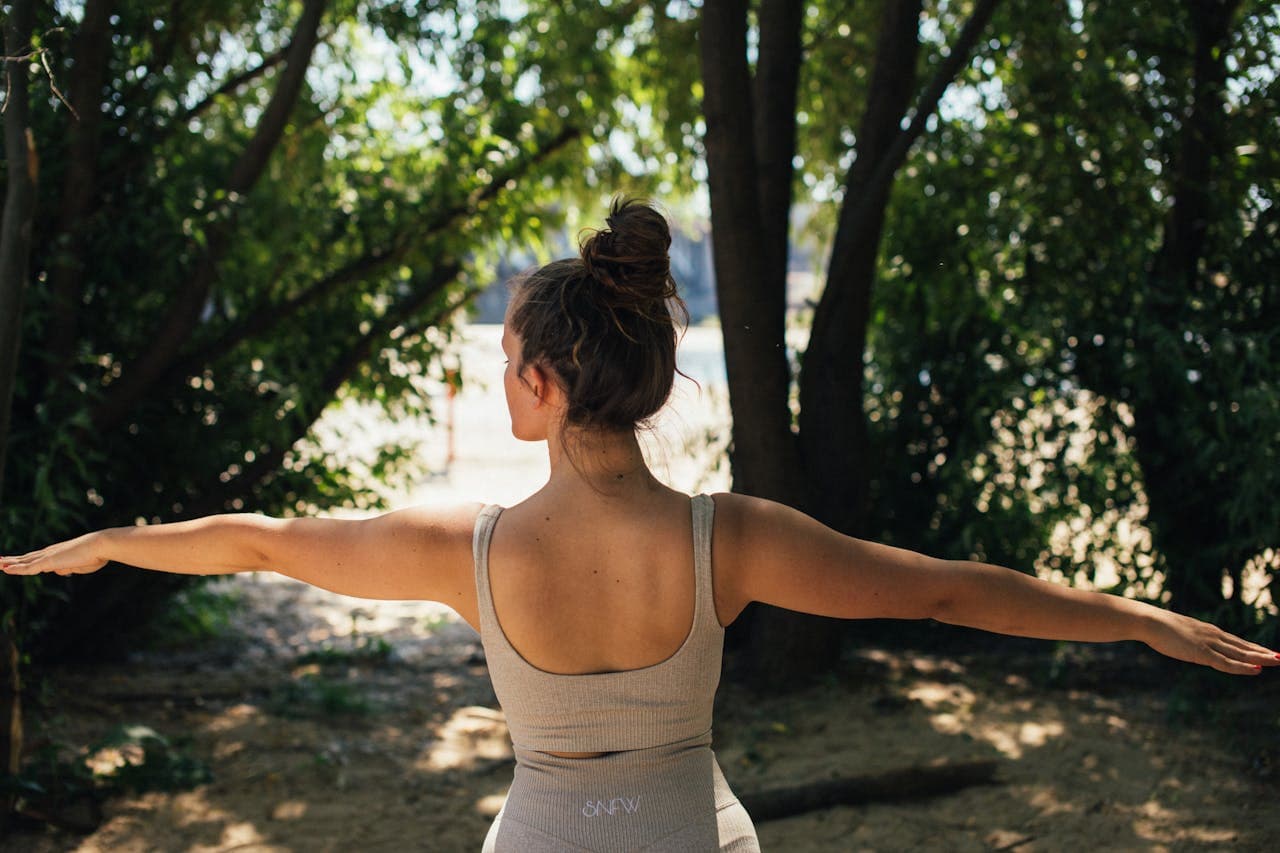Does your anxiety feel like an uninvited roommate who never leaves? One that constantly whispers worst-case scenarios in your ear? If you're nodding right now, you're not alone. Millions struggle with anxiety that hijacks their daily life, relationships, and dreams.
You've probably tried telling yourself, "just relax" or "snap out of it." But that doesn't work, right? Anxiety is like having a smoke alarm that goes off when you're just toasting bread!
But here's some good news: Cognitive Behavioral Therapy (CBT) has helped millions break free from anxiety's grip.
Living with Anxiety Disorders
This is your life with anxiety calling the shots.
- That constant knot in your stomach.
- The racing thoughts that won't quit.
- The situations you avoid because they feel too overwhelming.
This is an anxiety disorder controlling your days, stealing your confidence, and shrinking your world.
Let's pull back the curtain on what anxiety disorders really feel like in everyday life.
The Hidden Reality of Daily Anxiety Struggles
Anxiety disorders come in many forms.
You might have:-
- Generalized anxiety that makes every decision feel life-or-death.
- Social anxiety that turns a simple coffee run into a nightmare.
- Panic attacks hit you out of nowhere.
Why Willpower Alone Isn't Enough
Tried telling yourself "just calm down" a hundred times? Yeah, we've all been there.
But here's the truth: anxiety isn't something you can simply "think away".
Your brain has actually changed how it processes fear. Those "what if" thoughts aren't just in your head; but they trigger real physical reactions. It's like trying to fix a broken leg with positive thinking alone.
Willpower works for some challenges. But anxiety? That needs specific tools.
The Cost of Untreated Anxiety
Living with untreated anxiety is exhausting. It steals your joy, strains relationships, and can even impact your physical health.
Note: Chronic anxiety increases the risk for heart problems and weakens your immune system.
You might be missing out on opportunities you deserve.
- Avoiding social events.
- Turning down promotions.
- Skipping doctor appointments.
Your anxiety is robbing you of your best life.
The good news? You don't have to keep paying this price. CBT gives you the keys to take back control.
Life with Anxiety Under Control
This is what freedom feels like.
- No more constant dread.
- No avoiding situations that matter to you.
- No letting anxiety call the shots in your life.
With CBT, you'll discover what it's truly like to live with anxiety under YOUR control.
Let's explore what your life could look like when you have the right tools in your toolbox.
The Proven Benefits of CBT for Anxiety
Research shows CBT delivers 50-60% symptom reduction for most anxiety disorders. Unlike medication alone, CBT gives you skills that last long after treatment ends. You're not just getting relief, but you're building permanent tools to handle future challenges.
These skills become second nature. You'll catch anxious thoughts before they spiral. You'll face fears that once seemed impossible.
Best of all? You'll feel in control of your life again.
Why CBT Works When Other Approaches Fall Short
CBT works because it's practical and structured. While medication treats symptoms and general talk therapy explores feelings, CBT gives you specific tools to change your thoughts AND behaviors.
It's like getting both a map and a compass instead of just hearing about the destination.
You'll know exactly what to do when anxiety strikes.
How CBT Actually Treats Anxiety
Okay, let's get real about how CBT actually works. It's two powerful, science-backed tools working together to rewire your anxiety response.
These tools are:-
- Exposure Therapy
- Cognitive restructuring
Here's exactly how these techniques help you take back control, step by step.
How Exposure Therapy & Cognitive Restructuring Work Together
Exposure and cognitive restructuring build on top of each other.
- One tackles your behaviors.
- The other tackles your thoughts.
Together, they break the cycle.
Imagine you're afraid of elevators.
- Exposure Therapy has you step inside an elevator.
- Cognitive restructuring helps you challenge "This elevator will crash" thoughts.
Without cognitive work, exposure might feel too scary. Without exposure, cognitive work might stay theoretical.
Together, they create real change in your brain.
What CBT Looks Like for Different Anxiety Disorders
CBT is a toolbox where your healthcare provider selects the right tools for YOUR specific anxiety. While the core principles remain the same, the techniques shift slightly depending on whether you're dealing with panic attacks, social fears, or obsessive thoughts.
Let's see how CBT adapts to tackle each anxiety disorder head-on.
CBT for Generalized Anxiety Disorder (GAD)
If your mind races with "what if" scenarios, CBT offers specific tools. You'll learn to challenge catastrophic thinking like "If I'm late, I'll lose my job."
You imagine the worst-case scenario until it loses its power. Then you develop realistic outcomes.
You'll also practice "worry time", setting aside specific minutes to worry. This contains anxiety instead of letting it take over your whole day.
Many find relief in just 12-16 sessions. You'll gain tools to manage uncertainty without constant dread.
CBT for Social Anxiety
Social anxiety makes you believe "Everyone is judging me." CBT helps prove this wrong through gentle experiments.
- You might start by making small talk with a barista.
- Then progress to asking strangers for directions.
Each step builds evidence against your fears. You learn that minor social mishaps aren't disasters.
The real magic happens when you realize: Most people aren't focused on you. They're worried about themselves!
CBT for Panic Disorder
Panic disorder tricks you into fearing normal body sensations. CBT uses "interoceptive exposure" to retrain this response.
You might:-
- Spin in a chair to create dizziness.
- Run in place to increase heart rate.
This teaches your brain: "These sensations aren't dangerous."
Cognitive restructuring helps change thoughts like "This racing heart means I'm having a heart attack" to "This is just anxiety. It will pass."
Many people see significant improvement in 12 sessions. You'll learn to ride the wave of panic until it recedes.
CBT for OCD and PTSD
For OCD, CBT uses Exposure and Response Prevention (ERP). You face fears WITHOUT performing compulsions. This breaks the OCD cycle.
If you wash your hands repeatedly, ERP might have you touch a doorknob and wait 5 minutes before washing. Then 10 minutes. Then longer.
For PTSD, CBT helps process traumatic memories safely. You might write about the event or imagine it in detail. This reduces the memory's power over time.
Both approaches follow the same principle: Facing fears safely rewires your brain's fear response.
What to Expect in CBT Treatment
Let's clear the confusion: CBT isn't hours of lying on a couch talking about your childhood. It's a practical, structured, and skills-based treatment designed specifically to help you take control of your anxiety.
Here's exactly what your CBT journey will look like from session one to graduation day.
The Typical CBT Treatment Journey
Most CBT treatment for anxiety runs 12-16 sessions. The first few sessions are about understanding your anxiety patterns. You'll learn what triggers your anxiety and how you respond.
Then comes the skill-building phase. This is where you practice exposure and cognitive restructuring. Your provider guides you through gradually facing fears while changing thought patterns.
Finally, you'll focus on maintaining progress and preventing relapse. You'll feel more confident handling anxiety on your own.
Your Role in Making CBT Work
CBT works best when YOU do the work between sessions. Your provider isn't a magician but your guide. The real change happens when you practice the skills daily.
Homework assignments aren't busywork. They're essential for rewiring your brain's fear response. You might track anxious thoughts or practice approaching feared situations.
It's normal to feel uncomfortable at first. Facing fears takes courage. But remember: discomfort now means freedom later.
Each small step builds your confidence to handle bigger challenges.
Your commitment makes all the difference. The more you practice, the faster you'll see results.
Common Misconceptions About CBT
Let's clear up some myths about CBT.
It's just positive thinking
CBT isn't about replacing "I'm going to fail" with "I'm going to succeed." It's about realistic thinking.
CBT DOES NOT address emotions
Some think it's all logic and no feelings. Wrong! CBT helps you understand and manage emotions through practical tools.
CBT IS a quick fix
While it's often shorter than other therapies, real change takes consistent effort. But the skills you learn last a lifetime.
Complementing CBT with Other Approaches
CBT works best when it's part of your complete wellness plan. But it is just the foundation of your anxiety toolkit and not the entire toolbox.
Mindfulness practices boost CBT results
They help you notice anxious thoughts without getting swept away by them. Simple breathing exercises can calm your nervous system before tackling exposure exercises.
Medication helps too
Research shows that combining CBT with medication works better than either alone for some anxiety disorders.
Note: Adding other approaches doesn't mean CBT isn't working. It means you're building a comprehensive plan for lasting change.
Self-Help CBT Techniques You Can Try Today
You don't need to wait for therapy to start making progress. These simple techniques put CBT power in your hands right now:
The 3-Column Thought Record
Grab paper and divide it into three columns:
- Situation (Where were you? What happened?)
- Automatic Thought ("I'm going to mess up this presentation")
- Balanced Thought ("I'm nervous, but I prepared well")
Your balanced thought should feel true, not forced.
The 5% Exposure Challenge
Pick one small anxiety trigger. Now do it, but only 5% of what normally makes you anxious.
Afraid of social events? Just walk in and initiate a conversation with just one person.
Each time, increase by 5%.
Conclusion
You've just learned how CBT gives you real tools to break free from anxiety's grip.
Those two powerful pillars:
- Exposure therapy
- Cognitive restructuring
Work together to help you face fears safely and change anxious thought patterns.
Starting treatment takes courage. You might feel uncomfortable at first, and that's normal! Discomfort now means freedom later.
Every small step builds your confidence to handle bigger challenges.
You're not alone in this journey; millions have walked this path before you and found relief.
Ready to take your first step toward freedom from anxiety? Schedule an appointment with our CBT specialists today and start building your personalized anxiety toolkit.
Additional Resources for Your Anxiety Journey
For a clearer understanding of your specific anxiety, check out our guide on Understanding Anxiety Disorders: Types, Symptoms & Treatments.
With CBT, you're building lifelong skills to handle whatever life throws your way.
Your journey to freedom starts with one step. Take it today.




